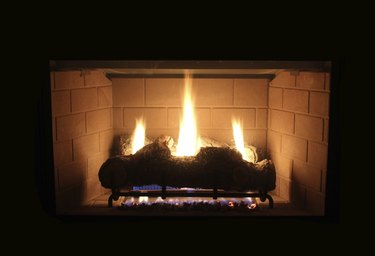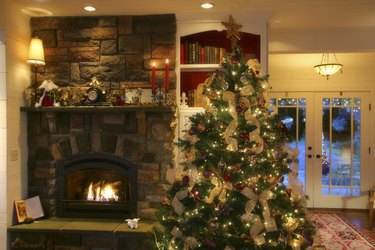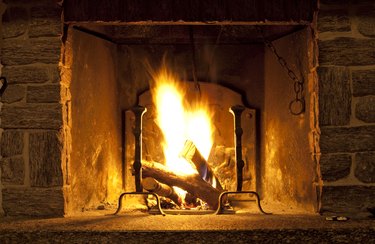
Relax and enjoy the ambiance of a toasty fire whenever you're chilly, because self-contained fireplaces don't consume as much energy as you might imagine. As of June 2011, most gas fireplaces cost less than 30 cents per hour to operate. The model's energy input and current gas prices will determine your actual rate. As a frame of reference, gas furnaces cost about four times as much as gas fireplaces to run, so you can warm up without spending a fortune.
Formula Guidelines
Video of the Day

Most gas hearths use between 20,000 and 60,000 BTUs per hour, according to the American Gas Association. To find your model's exact energy output, check the user manual. Divide the number of BTUs by 1,000 to arrive at the number of cubic feet burned per hour. Multiply the result by the current price of natural gas to determine the hourly operation cost.
Video of the Day
Case Example

Assuming that a gas hearth uses 40,000 BTUs per hour, divide 40,000 by 1,000 to arrive at 40 cubic feet per hour. If gas costs $0.0042 per cubic foot, then 40 times $0.0042 equals $0.17 per hour. You can operate this fireplace for 17 cents per hour, but if natural gas prices increase, your cost will also go up accordingly. If you're using the fireplace to heat your room, consider the efficiency rating of the unit. Models that operate at 70 percent efficiency will lose 30 percent of the fuel in exhaust, so you won't feel as warm as you would with a more efficient design.
Lowering Energy Costs

To save on heating costs, lower your thermostat when you flip on the fireplace. You'll enjoy a cozy room without paying to heat the rest of the house. Turn on the blower switch to circulate the hot air throughout the space. During warm months, extinguish the pilot light. Although the pilot light burns less than 1,000 BTUs per hour, that little blue flame wastes money if it's left on during the summer or other periods of nonuse.
Wood Versus Gas

Gas fireplaces operate more efficiently than wood-burning hearths and add similar property value. Because wood-burning fireplaces only operate at 10 percent efficiency, most of the heat goes up the chimney. Gathering logs takes more time and work than flipping on a switch, and gas hearths are safer to operate than old-fashioned wood fireplaces. When you factor in the price for a cord of wood, gas-fired models serve as the more affordable option.